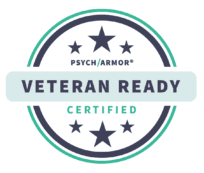Substance abuse harms not only the addicted individual but also their loved ones. For every person who struggles with a substance use disorder, there is a network of parents, children, and loved ones who are also affected by that addiction.
What is the Family Systemic Intervention Model?
The Family Systemic Intervention Model, often referred to as Family Systems Therapy or Family Systems Theory, is an approach to psychotherapy and counseling that focuses on understanding and addressing the dynamics within a family system as a whole, rather than just on individual family members. It is based on the belief that individuals are best understood and treated within the context of their family and social systems.
The Family Systemic Intervention Model of therapy acknowledges the role that families play both in experiencing the effects of addiction and in helping their loved one recover. In this model, those involved are encouraged to think of therapy and recovery as a group process, rather than something that the person with addiction must undergo completely alone. Though it is similar to the traditional intervention model, family systemic intervention is different in several important ways:
Traditional vs. Systemic Interventions
Systemic Intervention
Systemic Intervention is conceived of as a two-way, continuous conversation. The individual who struggles with substance use is invited to express their point of view. The family, friends, and the addicted individual have multiple interactions leading to a mutual decision to seek treatment. This not only eases the pressure to stage a single successful intervention, but it also makes recovery a more collaborative process in which all parties have an active role.
Focus on Systemic Interventions:
- Systemic interventions focus on the larger context, such as families, groups, or systems.
- The emphasis is on understanding and addressing issues within the context of relationships, dynamics, and larger systems.
Underling Philosophy of Systemic Interventions:
- Systemic approaches are rooted in a belief that individuals are best understood within the context of their relationships and larger systems.
- The emphasis is on how interactions, patterns, and dynamics within systems contribute to problems and how changing these dynamics can lead to positive outcomes.
Systemic Interventions Methods:
- Systemic methods involve working with multiple individuals within a system (e.g., family, group).
- Therapists use techniques such as family therapy, group therapy, or organizational consulting.
- Diagnosis and treatment planning consider the interactions and dynamics among system members.
Systemic Interventions Goals:
- The goal is to improve relationships, patterns of interaction, and overall system functioning.
- Success is measured by the ability of the system to function more harmoniously and adapt to changes.
Traditional Intervention
Traditional Intervention is conceived of as a single event where family members explain how the addicted person’s behavior has affected them.
Traditional intervention is planned without consulting the person who is struggling with substance abuse. This can sometimes worsen already tense relationships, making the addicted person feel like their loved ones are ganging up on them.
Focus on Traditional Interventions:
- Traditional interventions tend to focus on individuals or specific issues.
- The emphasis is on identifying and addressing problems within an individual or a limited scope.
Underling Philosophy of Traditional Interventions:
- Traditional approaches are often rooted in individualism and assume that problems primarily reside within the individual.
- Treatment and intervention strategies are designed to change individual thoughts, behaviors, or emotions.
Traditional Interventions Methods:
- Traditional methods often involve one-on-one therapy or counseling sessions.
- Techniques may include cognitive-behavioral therapy, psychoanalysis, and other individual-focused approaches.
- Diagnosis and treatment planning typically center on the individual’s symptoms and history.
Traditional Interventions Goals:
- The goal is often to alleviate symptoms and resolve individual issues.
- Improvement is measured by changes in an individual’s mental or emotional state.
Traditional intervention is planned without consulting the person who is struggling with substance abuse. This can sometimes worsen already tense relationships, making the addicted person feel like their loved ones are ganging up on them.
- In systemic intervention, the person who is addicted to substances is part of the conversation from the beginning. Both family members and the addicted person participate in conversations about recovery, allowing them to make decisions together. In this way, family systemic intervention helps rebuild damaged relationships rather than straining them.
- After a traditional intervention, life changes dramatically for the addicted person but not necessarily for loved ones and family.
- After a systemic intervention, life does not go on as usual, either for the addicted person or for family members. The intervention ends when all parties make a commitment to therapy. The person who is struggling with addiction typically enters a residential recovery program, while family members agree to be an active part of that process.
Which method is better?
Extensive research suggests that the systemic approach to intervention is effective. A study in the Journals of Adolescent Research (as cited here) found that teens who completed a systemic intervention were more likely to complete recovery.
The systemic model is one of many evidence-based forms of therapy that may be incorporated into a customized treatment plan at The Ranch at Dove Tree. We encourage families to learn more about systemic intervention and how the principles of collaboration can influence recovery. In addition to incorporating family and relationships into our comprehensive treatment, residents at Dove Tree can benefit from a dedicated Family Week. This is an opportunity for families to learn more about addiction and residential treatment and get more involved in the recovery process.
As the family member of someone who is seeking treatment for substance use, you may feel many emotions: isolation, concern, or frustration that the recovery is slow. The family systemic model helps those who care for an addicted loved one work through painful emotions, allowing them to actually participate in the recovery process rather than just supporting it.
Use the links below to learn more about the Systemic Intervention Mode:
Association of Intervention Specialists:
What is the Family Systemic Model? May 2, 2017. Retrieved July, 2017.
Intervention Support:
Systemic Family Model Intervention. Intervention Support. Retrieved July, 2017.













